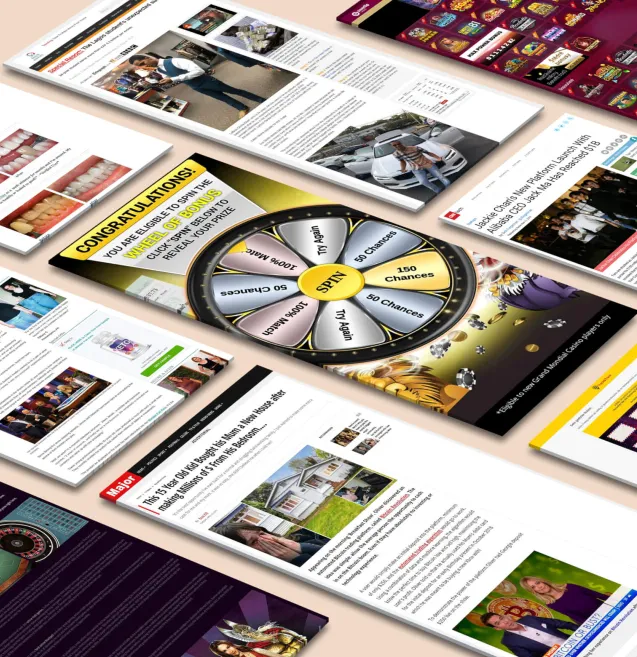
Our spy tools monitor millions of popup and pop-under from over 90+ countries and thousands of publishers.
Get StartedEthical pop advertising represents a fundamental shift in how digital marketers approach user engagement. Rather than bombarding visitors with intrusive interruptions, this approach prioritizes respect, honesty, and genuine value exchange. The digital marketing landscape has reached a critical juncture where user trust in pop ads directly impacts campaign success and brand longevity.
Transparency serves as the cornerstone of this trust-building process. When you openly communicate your data practices, respect user preferences, and design ads that enhance rather than disrupt the browsing experience, you create meaningful connections with your audience. Users are increasingly savvy about their digital rights and expect advertisers to honor their privacy and time.
This article will guide you through transparent pop ad strategies that build authentic relationships with your audience. You'll discover practical methods to implement ethical advertising practices that protect user privacy, comply with regulations, and achieve your business objectives without compromising integrity. The path to sustainable digital advertising success lies in balancing profitability with responsibility.
Ethical pop ads are a significant change from traditional aggressive advertising methods to user-focused approaches that prioritize consent and transparency. At its core, ethical pop advertising operates on three fundamental principles: respect for user autonomy, honest communication about data usage, and minimal disruption to the browsing experience.
The difference between intrusive and non-intrusive pop advertising lies in how they are executed and their intent. Intrusive pop ads typically:
However, responsible pop marketing takes a different approach. You'll see these practices in action when ads:
Consider a website that waits until you've read 50% of an article before showing a single, relevant pop-up with an easy-to-find close option. This respects your engagement while still achieving marketing objectives. The ad doesn't hijack your experience—it complements it by offering genuine value at an appropriate moment.
User experience sits at the heart of non-intrusive pop advertising. When you bombard visitors with aggressive tactics, you're essentially telling them their comfort doesn't matter. Excessive pop-ups that appear every few seconds create frustration. Auto-playing videos with sound jolt users out of their browsing flow. These approaches damage your brand reputation faster than they generate conversions.
The numbers speak clearly: websites using aggressive pop-up strategies see bounce rates increase by up to 35%. Users close tabs immediately when confronted with overlays that hide content or make navigation impossible. You're not just losing a potential customer—you're creating someone who actively avoids your brand.
Respectful ad strategies require a different mindset. Your pop ads should complement the browsing experience, not hijack it. Consider these implementation principles:
You can maintain visibility without being intrusive. A well-designed pop ad respects screen real estate, allows users to continue reading, and provides genuine value rather than demanding attention through disruption.
Ethical Pop Advertising: Building Trust Without Intrusion starts with honest communication about data practices. When you tell users exactly what information you collect through pop ads and why you need it, you create an immediate foundation of credibility. Transparent pop ad strategies require upfront disclosure about tracking pixels, cookies, and behavioral data collection before users interact with your advertisements.
Your privacy policies need to be more than legal documents buried in footer links. Users should access these policies directly from your pop ads through clearly visible links or icons. The language you use matters—technical jargon creates barriers while plain English builds understanding. When users can quickly grasp how their data flows through your advertising ecosystem, they feel respected and informed.
Consent-based advertising transforms the user relationship from passive acceptance to active participation. Implementing opt-in mechanisms for data collection demonstrates respect for user autonomy. You give users control through:
Data disclosure shouldn't feel like a confession—it's an opportunity to show users you value their trust. When you explain that collecting browsing behavior helps deliver relevant offers instead of random advertisements, users understand the mutual benefit. This transparency in transparent pop ad strategies separates ethical advertisers from those who hide behind vague terms and conditions.
Data protection starts with asking a simple question: what information do you actually need? Collecting only essential user data for ad personalization purposes demonstrates respect for your audience's privacy. You don't need to know every detail about someone's browsing history to deliver relevant ads. Focus on the data points that genuinely improve the user experience without crossing into invasive territory.
De-identified data serves as your safeguard against over-personalization. When you strip personally identifiable information from your datasets, you maintain the ability to target effectively while protecting individual privacy. This approach prevents the creepy factor that comes with ads that seem to know too much about someone's personal life. You can still segment audiences and deliver relevant content without making users feel like they're under surveillance.
Consent-based advertising requires you to implement clear opt-in and opt-out mechanisms. Users should control what data you collect and how you use it. This isn't just about checking a compliance box—it's about respecting human autonomy. When someone opts out of personalized ads, honor that choice immediately and completely.
Privacy regulations like GDPR and CCPA set the baseline for ethical data practices. These frameworks mandate specific protections around data collection, storage, and usage. You need to understand these requirements and build them into your advertising infrastructure from the ground up. Compliance isn't optional; it's the foundation of ethical digital advertising that protects both users and your business reputation.
GDPR compliance and CCPA compliance are essential requirements for any advertiser working in today's digital world. The General Data Protection Regulation (GDPR) requires you to get explicit consent before collecting personal data from European users, while the California Consumer Privacy Act (CCPA) gives California residents the right to know what data you collect and ask for its deletion.
To meet these standards, you need to put specific technical and operational measures in place:
In addition to following the law, ethical standards require you to stop using deceptive practices in your advertising. Your pop ads should never have misleading headlines that promise one thing but deliver another. The "close" button must be easy to see and use—not hidden or placed in a way that tricks users into clicking through to your offer.
Honest communication means presenting your value proposition accurately without exaggeration. If you're offering a free trial, specify exactly when charges begin. When you collect email addresses, state explicitly how you'll use them. This straightforward approach builds credibility that regulatory compliance alone cannot achieve.
Ethical Pop Advertising: Building Trust Without Intrusion transforms how brands connect with their audiences. When you implement transparent pop ad strategies, you're investing in relationships that extend far beyond a single click or conversion. Brands that prioritize honest communication in their advertising see measurable improvements in customer retention rates and lifetime value.
The connection between ethical practices and brand reputation operates on a simple principle: users remember how you make them feel. When your pop ads respect their time, privacy, and intelligence, you create positive associations that influence future purchasing decisions. Companies like Patagonia and The Honest Company have built entire business models around transparency, demonstrating that user trust in pop ads directly correlates with brand advocacy.
Consistent honesty in ad interactions means:
Respect manifests through actionable choices. You give users control over their ad experience through easy-to-find close buttons, frequency caps that prevent ad fatigue, and clear value propositions that explain why they should engage. These practices compound over time, building a foundation of trust that competitors using aggressive tactics cannot replicate.
Sustainable monetization requires a delicate balance between generating revenue and maintaining ethical standards. You can achieve profitability without sacrificing user trust by implementing pop ad strategies that respect your audience's experience and privacy. The key lies in viewing ethical practices not as limitations but as investments in your brand's future.
Diversifying your revenue streams reduces dependency on aggressive advertising tactics. Consider these approaches:
You'll find that diversification creates stability. When pop ads represent just one component of your monetization strategy, you can afford to be selective and ethical in their implementation. This approach protects your business from revenue fluctuations while demonstrating respect for user preferences.
Continuous optimization keeps your ethical pop ad strategy effective. Regular A/B testing helps you identify which ad formats, frequencies, and placements generate revenue without degrading user experience. You should monitor metrics like bounce rates, session duration, and conversion rates alongside revenue data. This comprehensive view ensures you're not sacrificing long-term user relationships for short-term gains.
The investment in ethical infrastructure pays dividends through reduced churn rates, improved brand perception, and higher lifetime customer value.
Transparent ad implementation requires concrete action steps that transform ethical principles into operational realities. You need to establish clear mechanisms that empower users while protecting your business interests.
Your consent mechanisms should feature straightforward language that eliminates legal jargon. Place opt-in checkboxes in prominent locations where users naturally look, avoiding pre-checked boxes that assume consent. Design your opt-out process to be equally accessible—users shouldn't need to navigate through multiple pages or contact customer support to withdraw consent. Include granular options that let users choose specific data categories they're comfortable sharing rather than forcing an all-or-nothing decision.
Your privacy notices must explain data collection practices in plain English before users encounter your first pop ad. Specify exactly what information you collect, how you use it, who receives access, and how long you retain it. Break complex information into digestible sections using headers and bullet points. Include real-world examples that illustrate your data practices—"We use your browsing history to show you relevant product recommendations" communicates more effectively than vague statements about "improving user experience."
Cookie consent management platforms like OneTrust, Cookiebot, and TrustArc streamline transparent ad implementation. These solutions provide customizable banners that meet GDPR and CCPA requirements while maintaining your site's aesthetic. Privacy management dashboards give users centralized control over their data preferences across multiple visits.
Ethical pop advertising benefits extend far beyond immediate conversions—they create sustainable foundations for digital success. When you prioritize building user trust through transparent practices, you're investing in relationships that generate consistent returns over time.
The path forward requires commitment to these core principles:
Ethical Pop Advertising: Building Trust Without Intrusion isn't just a compliance exercise—it's a competitive advantage. Brands that embrace these strategies position themselves as trustworthy partners in an increasingly skeptical digital landscape.
Ready to transform your pop advertising approach? Explore industry reports from the Interactive Advertising Bureau (IAB), review GDPR and CCPA compliance guidelines, and study case studies from brands successfully implementing transparent ad strategies. Your users—and your bottom line—will thank you for making the shift toward ethical, trust-centered advertising practices that respect both business objectives and human dignity.
Receive top converting landing pages in your inbox every week from us.
Tips & Tricks
Expanding your pop ad campaigns globally requires the right geo-targeting strategies. Explore five proven approaches to scaling pop ads across different regions while maintaining strong performance. Learn how to adapt creatives, timing, and messaging to match local audiences and cultural nuances. Perfect for advertisers ready to take their pop campaigns to an international level with confidence.
David Kim
7 minDec 11, 2025
How-To
Turn lost opportunities into sales with effective holiday remarketing using push ads. Learn how to re-engage shoppers who abandoned their carts through timely, personalized notifications. Discover proven strategies for crafting irresistible messages that drive action and recover revenue. Perfect for marketers aiming to boost conversions and maximize holiday season profits.
Elena Morales
7 minDec 10, 2025
How-To
AI is transforming the way advertisers approach pop campaigns in 2025. Discover how automation, predictive analytics, and real-time optimization can enhance targeting and boost engagement. Learn practical tips for creating smarter, high-performing pop ads that deliver measurable results. Perfect for marketers ready to stay ahead in the evolving world of AI-driven advertising.
Priya Kapoor
7 minDec 8, 2025




